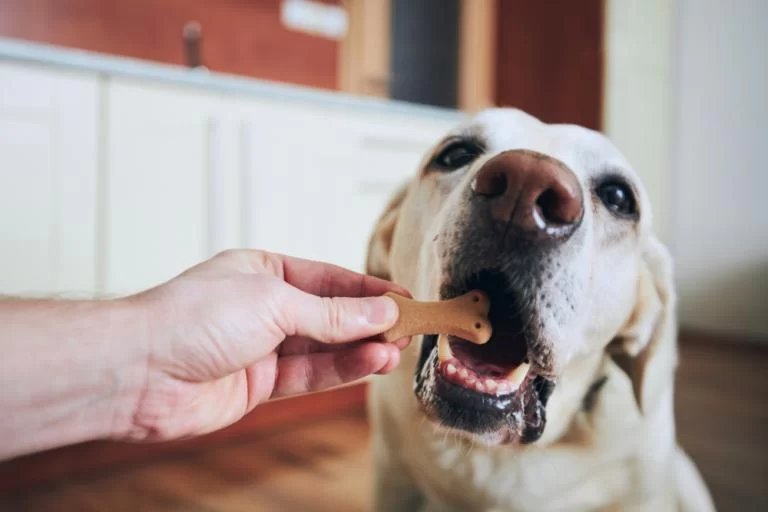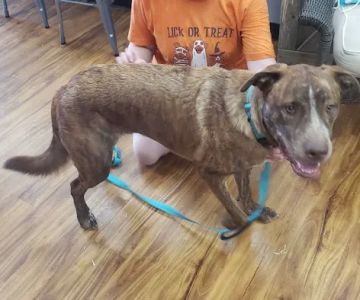Why Does Your Dog Pull During Walks?
Anyone who has ever walked a dog knows the struggle of being pulled along by an eager, excited pup. Whether it's a puppy or an adult dog, pulling on the leash can be frustrating and exhausting. I remember when my dog, Charlie, a lively golden retriever, would pull me relentlessly during our walks. It wasn't just a mild tug; it was as if he was on a mission to drag me to the end of the street! Over time, I realized that the issue wasn’t just about excitement; it was about a lack of training and a need for better leash manners.
Dogs pull on the leash for various reasons – they might be excited, overstimulated by their surroundings, or simply haven't learned to walk politely on a leash. Teaching a dog to remain calm during walks is an essential skill for both the dog and the owner. Not only does it make walks more enjoyable, but it also helps maintain safety for both you and your dog, particularly in areas with traffic or crowds.
Step-by-Step Guide to Teaching Your Dog to Walk Calmly
1. Start with Basic Obedience Training
Before addressing leash pulling directly, it’s important to establish a foundation of basic obedience with your dog. Commands like "sit," "stay," and "come" are crucial in getting your dog to focus and understand that you are in charge during walks. For example, I practiced with Charlie inside the house before attempting to walk him outside. I would have him sit calmly before putting on his leash. This helped Charlie associate the leash with calm behavior.
Once Charlie mastered sitting calmly on command, it was easier to move to the next step of walking calmly. It’s important to build your dog’s understanding that good behavior results in rewards such as treats or praise.
2. Choose the Right Leash and Harness
Another aspect that can make or break your dog’s behavior during walks is the type of leash and harness you use. I found that the standard collar often led to choking or discomfort for Charlie, which made him pull even more. A front-clip harness or a no-pull harness was a game changer for us. These harnesses are designed to reduce pulling by redirecting your dog’s movement and providing better control.
For dogs who are strong pullers, using a front-clip harness combined with a shorter leash can help prevent them from building up the momentum to drag you along. The key is to avoid a harness or leash that allows too much freedom, which can lead to unwanted behaviors.
3. Reward Calm Behavior
One of the most effective techniques I used to teach Charlie to walk calmly was positive reinforcement. Every time he walked without pulling, I would praise him and give him a treat. It didn’t take long for him to associate calm walking with rewards. For instance, if we were walking down the street and Charlie was calm, I’d say, “Good boy!” and give him a small treat. This positive feedback helped him understand that good behavior results in positive outcomes.
Be consistent with rewards. Even the slightest display of calm behavior should be reinforced. Over time, this builds a habit and your dog will learn to focus more on you than on distractions around him.
4. Use the Stop-and-Go Method
If your dog pulls on the leash, one of the most effective ways to correct the behavior is to stop moving. This is a simple yet powerful technique. When Charlie pulled, I would stop walking and stand still, waiting for him to return to my side before continuing. This method teaches your dog that pulling gets them nowhere, and the only way to keep moving is by walking calmly beside you.
It’s important to stay patient and persistent with this method. At first, it may seem like nothing is changing, but the key is consistency. After a few sessions, Charlie began to understand that pulling would result in a halt to our walk, and calm walking would keep us going.
5. Keep Walks Short and Positive
Especially when you’re first starting leash training, it’s best to keep your walks short and sweet. Overstimulation can lead to more pulling and excitement. Start with a brief walk around the block, allowing your dog to focus on the task at hand without becoming too distracted by the environment.
In addition, ensure that your dog is well-exercised before a walk. A dog with pent-up energy is more likely to pull, so make sure your dog has had plenty of physical and mental stimulation before you head out. I found that taking Charlie for a brief play session before our walk helped him release extra energy, which made him much calmer on the leash.
Dealing with Setbacks During Training
Training your dog to walk calmly on a leash won’t happen overnight. Like all training, there will be setbacks along the way. Sometimes, your dog might regress, especially if they’re faced with distractions like other dogs, people, or squirrels. It's important to stay patient and never punish your dog for pulling. Instead, refocus their attention with commands, treats, or by simply stopping and waiting for them to calm down.
If you encounter a setback, don’t be discouraged. Every walk is an opportunity to reinforce good behavior, and over time, you’ll notice significant progress. I remember one particularly frustrating day when Charlie got overly excited and started pulling again. Instead of reacting with frustration, I simply paused, took a deep breath, and resumed our training. The more I remained calm, the more Charlie was able to settle down and focus on me.
Additional Tips for Successful Leash Training
- Use a Calm and Confident Tone: Dogs respond to the energy their owners give off. Stay calm, confident, and assertive during walks to ensure your dog feels secure and knows you're in charge.
- Practice in Different Environments: Once your dog has mastered walking calmly in familiar settings, begin practicing in more distracting environments like parks or busy streets. Gradually increase the difficulty to help your dog stay focused.
- Incorporate Fun Activities: Make walks more enjoyable by incorporating activities like sniffing games, training exercises, or simply allowing your dog to explore in a controlled manner. This keeps your dog mentally engaged and reduces anxiety.
Teaching your dog to walk calmly may require time, consistency, and a lot of patience. But with the right approach, you’ll soon enjoy peaceful walks with your dog, free of pulling and frustration. I’ll never forget the first walk where Charlie walked calmly beside me without pulling. It was a moment of triumph, and I knew all the hard work had paid off.












